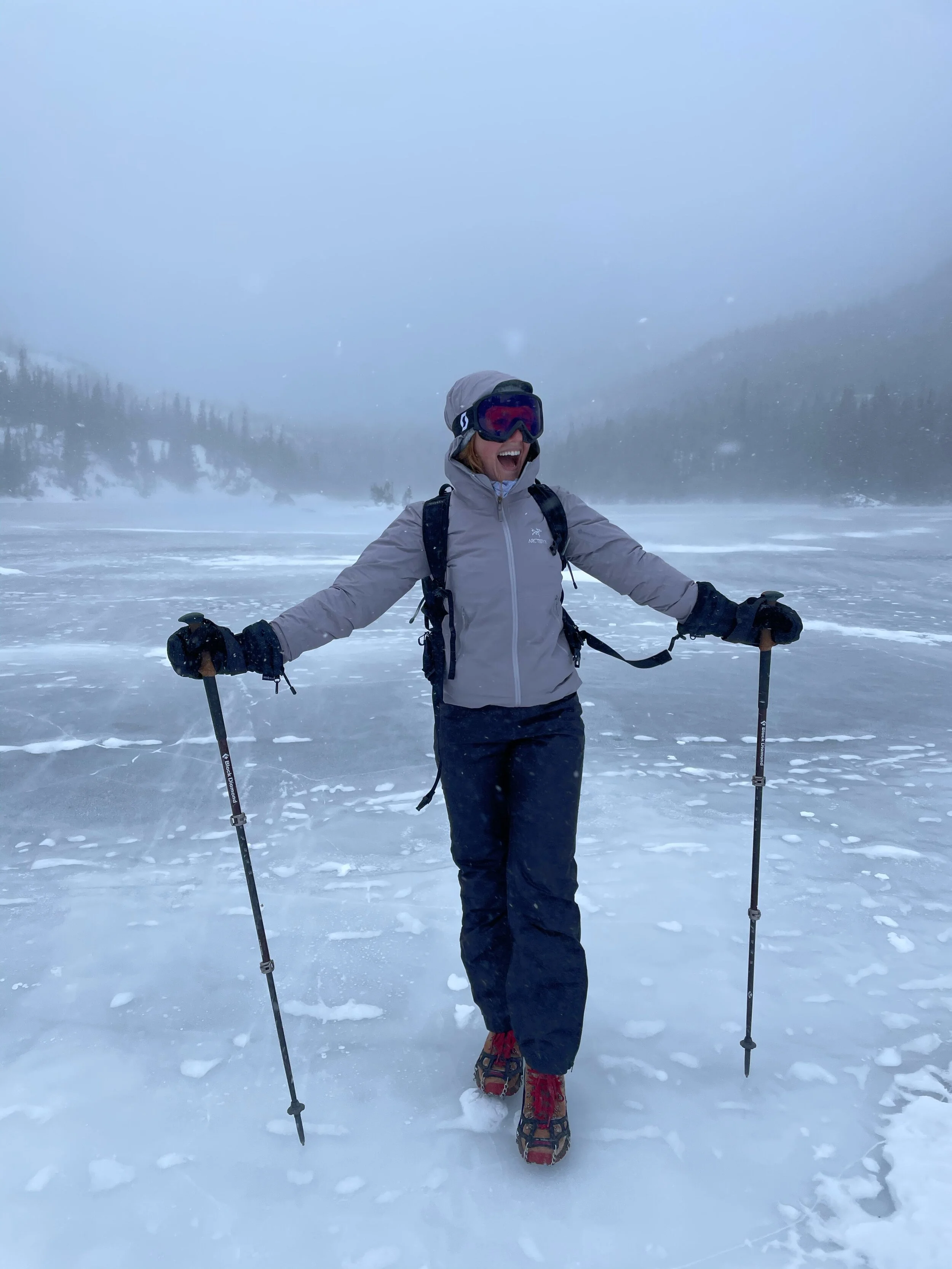11 Tips for Winter Camping
You wake up, unzip the tent, and realize you’re surrounded by a winter wonderland. The air is crisp but the beauty of the nature around you makes you forget about everything else. Camping in the winter is magical, peaceful, and beautiful. Nothing seems to beat it in my eyes. However, there’s a lot to learn to stay warm and safe. If you follow these 11 steps, you’ll be on your way.
1. Layer, layer, layer
The most important concept in winter hiking. If you’re cold, you add layers. If you’re hot, you take off layers. The key is to find comfort. If you sweat too much, your clothes will be wet which could cause hypothermia. If you aren’t wearing enough clothing, you could get hypothermia. Bring lots of options and find your sweet spot!
2. Bring navigation and an emergency device
Bring some form of GPS (and a back-up). It’s SO easy to lose the trail in the snow. I use All Trails as my primary form of GPS and its always kept me from getting lost. Make sure to download the trail maps before heading out. I also have my Garmin InReach Mini as both a backup form of GPS and an emergency communication device.
3. Filter water by boiling it
In the winter your water sources may be very limited. If you have a flowing water source, filtering can be a little more complicated. Water filters clog if they freeze and iodine tablets take a lot longer to work in the cold. Your next best option is to boil the water. Always bring extra fuel just in case you need to do this.
If there’s no flowing water source but snow on the ground, that’s your water. Start by gathering clean, white snow and lighting your stove. Add a thin layer of snow to the bottom of the pot and hold it 1-2 cm. above the flame. Shake it around until it melts then add another handful of snow. Continue this process until you’ve melted a full pot. Boil the melted snow to filter it.
**Make sure to contact a ranger prior to your trip to determine water availability. They know the current conditions BEST.
4. Go pee when you need to pee
My least favorite part of winter backpacking is needing to pee during the night and having to get out into the cold to do so (especially when it’s multiple times in 20° temperatures — yes, this was me trying to stay hydrated). However, it’s so important to pee when you need to pee when it’s cold out. The longer you wait, the colder you’ll get. Your body uses energy to keep your urine warm in your bladder, making the rest of your body colder. If you can’t bear the idea of getting out of your toasty sleeping bag, use a wide-mouthed bottle.
5. Use sunscreen and wear eye protection
Alright here’s some advice coming from the queen of sunburns — I’m a redhead. If it’s cold and overcast, you can still get sunburned. The sun actually reflects off snow and back to you, making it more likely you’ll get burnt and get snow blindness (sunburned eyes). Use sunscreen (including your lips) and wear sunglasses or goggles with UV protection!
6. Bring hand warmers (and extra hand warmers)
You can put hand warmers in your mittens, in your jacket pocket, in your pants pocket, in your socks, in your sleeping bag, or in just about anywhere. They will literally save you. As an alternative (or addition), you can fill a Nalgene bottle with boiling water and put it in your sleeping bag to keep you extra warm.
7. Keep water bottles upside down
Water freezes from the top down – keep your water bottles upside down at night to prevent freezing. Make sure they’re screwed on tight so they don’t leak in the tent!
8. Sleep in clean clothes
When you’re looking for a way to cut base weight, you might decide to ditch your sleep clothes and sleep in your hiking clothes. Definitely NOT the best idea for winter camping! Body sweat and oils from your hiking clothes can take away from your sleeping bags insulation power making you colder. Sleep in clean clothes instead. I like to wear a base layer, such as the Icebreaker 200 Base Layer and the Icebreaker 200 Oasis Leggings. And don’t forget to wear socks. I bring an extra pair just to wear for sleeping so they’re clean and dry.
9. Drink hot chocolate before bed
Bring hot chocolate or tea and drink it before bed. A warm drink before bed will warm you up inside (and it tastes amazing).
10. Sleep with (basically) everything
Cold temperatures will mess with your gear — battery power will quickly go down, water filters will clog, and fuel will stop working. Sleep with your electronics, fuel, and water filter close to your body. I also like to put my hiking clothes and insulating jacket at the bottom of my sleeping bag – filling the empty space will keep your feet warm AND will keep your hiking clothes warm(er) for the morning.
Make sure to bring all your gear inside the tent at night. Otherwise, you’ll be putting on a frozen pair of boots in the morning!
11. Choose a safe campsite
You’ll want to pick a campsite that is out of avalanche danger and is sheltered by wind. If there’s snow on the ground, you can pack it down to make a tent site. Make sure to stake down the tent (and use snow stakes if needed).











